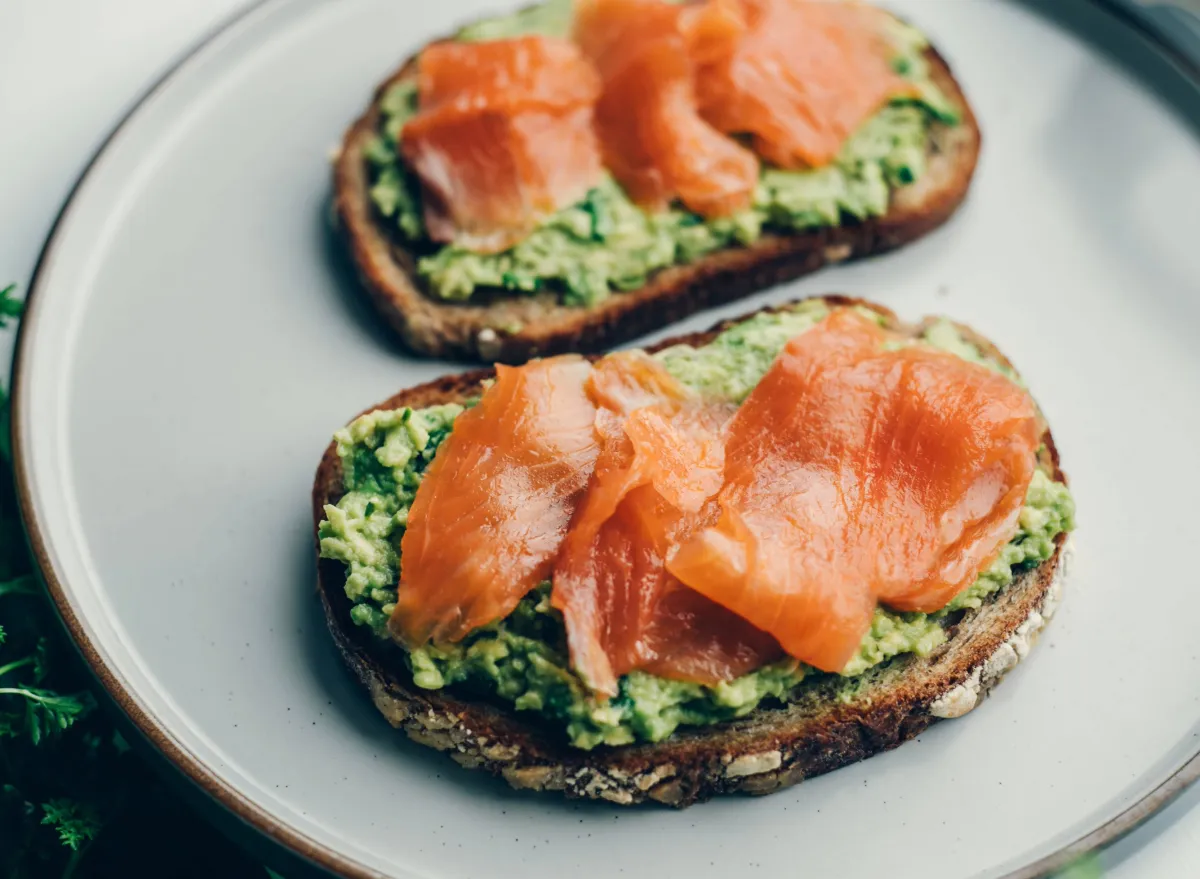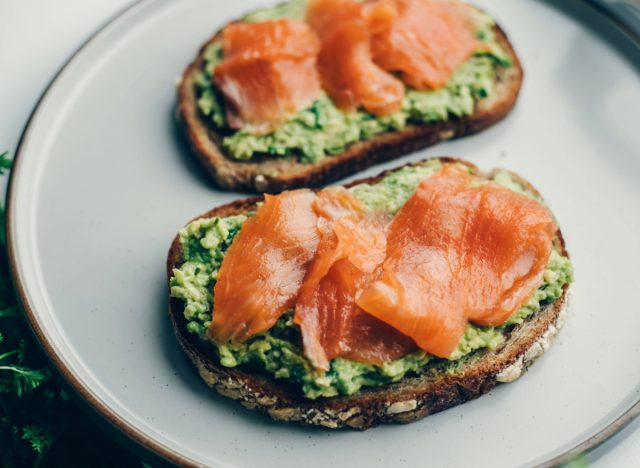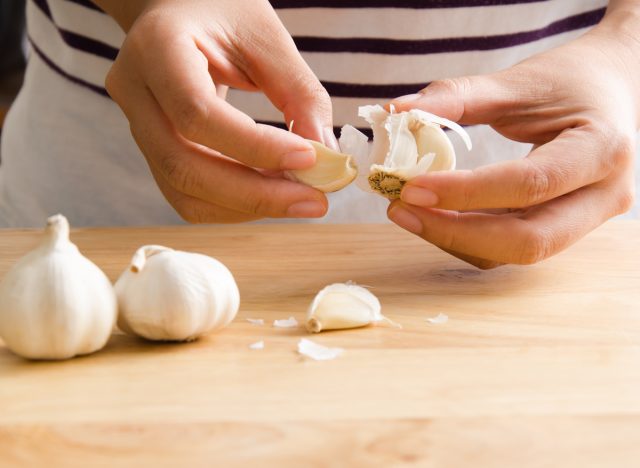5 Best Breakfast Foods for Joint Pain, Say Dietitians

Whether you notice joint pain related to arthritis, rigorous activity, or age, your food choices can influence the achiness you may feel. Generally, the less processed the food, the more likely it is to benefit your joints and overall health. Certain food groups, like fruits, veggies, and healthy fats contain unique factors that can alleviate the joint pain you may feel, and provide other health benefits, too. If you are looking for foods that may reduce your joint pain, let's start with the first meal of the day.
Here are the best breakfast foods for joint pain, and for more healthy tips, here's The #1 Best Juice to Drink Every Day, Says Science.
Smoked salmon

There are a few reasons why salmon is worth adding to your breakfast, and the healthy 0mega-3 fat it contains is at the top of the list. You may have heard friends and family members talk about taking an omega-3 or fish oil supplement, and there is good reason for its popularity. Omega-3 is a form of essential fat that plays major anti-inflammatory roles in the body, including reducing inflammation that may occur in your joints.
A couple of ounces of smoked salmon on whole-grain toast or wrapped around a portion of cream cheese are easy ways to enjoy this anti-inflammatory food. If you prefer to make your own salmon to include at breakfast, that is great, too!
Broccoli

You may not think about this cruciferous veggie as a breakfast staple, but it is worth adding to your morning. Broccoli and other cruciferous veggies, like cauliflower and Brussels sprouts, contain a compound that helps block an enzyme that leads to joint inflammation and pain.
While you should be eating no fewer than 2.5 cups of vegetables per day, aim for at least a half cup of your total veggie intake to come from cruciferous veggies. Along with an inflammatory-fighting compound, this class of veggies is packed with antioxidants and fiber, making them a great addition to any meal.
At breakfast, try adding chopped broccoli to your scrambled eggs or combining florets into a hash with roasted sweet potato and chicken sausage. Fresh and frozen are both great options for increasing your veggie intake at breakfast.
Turmeric

This root is known for its vibrant yellow coloring and is frequently found in curry dishes. Turmeric houses anti-inflammatory properties that can reduce joint pain and is even thought to improve memory and lower the risk of heart disease.
Fresh turmeric can easily be added to a blended smoothie, while dry ground turmeric can complement most savory dishes, from soups and stews to salads and stir-fries. Next time you blend up a smoothie at home, try adding fresh or dried turmeric into the mix for a nutritional boost.
While turmeric has a little bitterness to it, the sweetness of the fruit in your smoothie will easily disguise its taste. If you are wanting to add more turmeric to your breakfast routine, try sprinkling some onto avocado toast or over a parfait of plain Greek yogurt, nuts, and fruit.
Olive oil

This cooking oil is known for its heart-healthy fats and mild flavor, and it can also help reduce joint inflammation. The antioxidants in olive oil are thought to contribute the most anti-inflammatory benefit by acting in a similar way to ibuprofen. In fact, there is research that indicates extra virgin olive oil can even reduce joint pain when applied topically to joints.
While you can do this at any time of the day to reduce joint pain, when it comes to your breakfast meal, there are a few ways to incorporate this healthy fat. You can add a drizzle into your smoothie, use in place of butter on your toast or coat your pan before cooking an egg and veggie omelet.
Garlic

Known for its pungent flavor, garlic also houses anti-inflammatory properties that may reduce your joint pain. Throughout history, garlic has been a popular remedy for health conditions and is thought to pose many medicinal properties. While more research is necessary to understand the broadness of these health benefits, it is clear that garlic can reduce inflammation, and it may even help prevent cartilage damage in those who have arthritis.
Garlic can easily be added to any savory breakfast item. Try rubbing roasted garlic on your toast, adding chopped garlic to your breakfast hash, or combining minced garlic with avocado before spreading it on your toast. Just make sure to brush your teeth before heading to the office for the day!
Your food choices can be so impactful on your health, from the prevention and treatment of chronic disease to reducing discomfort associated with joint pain. While each of these factors can positively influence your joint pain, you will likely notice to most benefit when combining several of these habits as part of a well-rounded healthy lifestyle.









